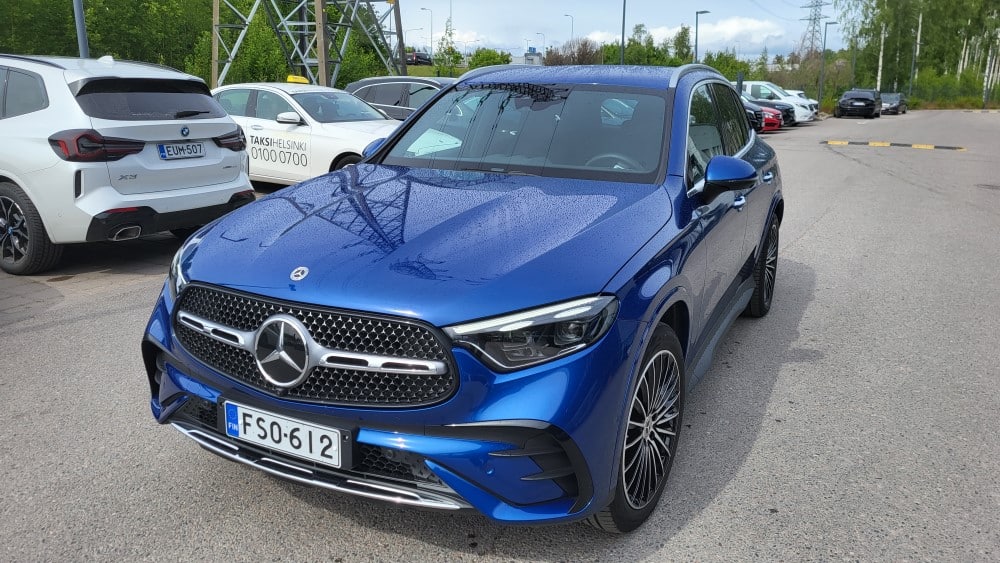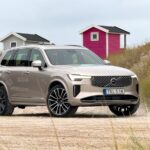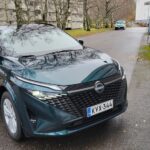Autotoday test drove the fourth-generation Mersu GLC-series SUV hybrid, which will be available in 2023. At the start of the test drive, the mileage was 11,767 km, which means that the test car was well prepared for the test drive conditions.
The GLC is available in 300e and 400e versions, with the main difference being the engine size. The GLC range includes petrol, diesel and plug-in hybrid options.
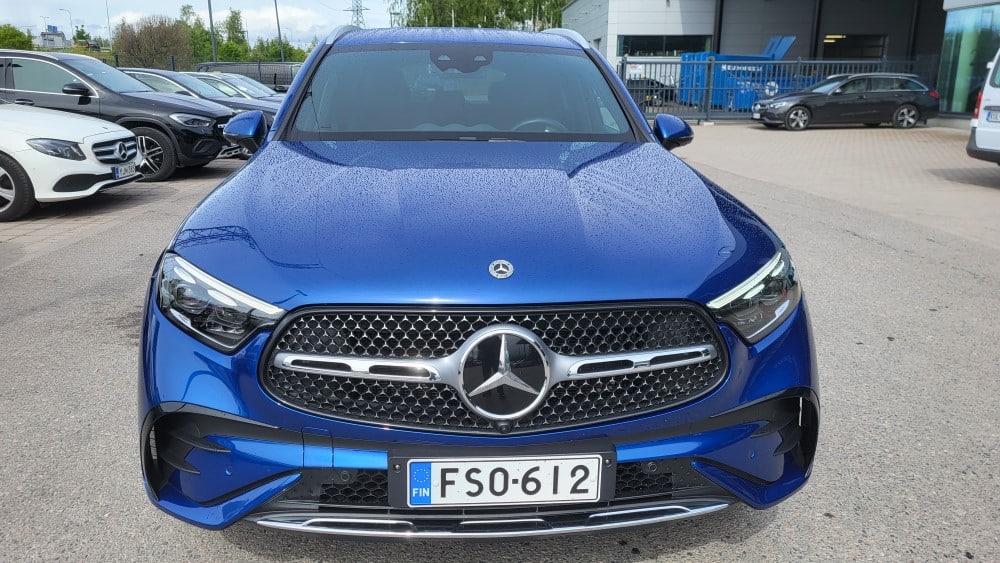
The electric range of the car is approaching 120 km, which is already starting to be enough for a slightly longer commute or shopping trip. The downside is that the batteries weigh more and the car’s own mass increases to 2,355 kg, while allowing the battery charging capacity to be increased to 31.2 kW.
A stunning first impression
When I sat down in the car, the initial sensation was quite overwhelming. The interior was elegantly styled to resemble an Italian sports car. A short test car with quilted side lines and beautifully crafted lines in the centre and doors, with elegant chrome trim. The car oozed harmonious styling and sporty flair. The design of the steering wheel was the best part, as it sat very dynamically in the driver’s hands. The steering wheel gave a good feel and grip on the road.
When driving, the steering was very responsive on asphalt roads, whether you were driving in the city, on a winding road or on a motorway. The grip in corners was very good, although the electronic automatic steering system tended at times to be better than the driver in terms of line selection.
An experienced driver might disagree with this slightly, as on less marked Finnish roads, the steering assist’s responsiveness occasionally interfered with line selection.
On the roadside, a passer-by might even have mistaken the car for being driven by a slightly hip driver while the steering was trying to find its place between lanes. Of course, these assistance programmes can be switched off.
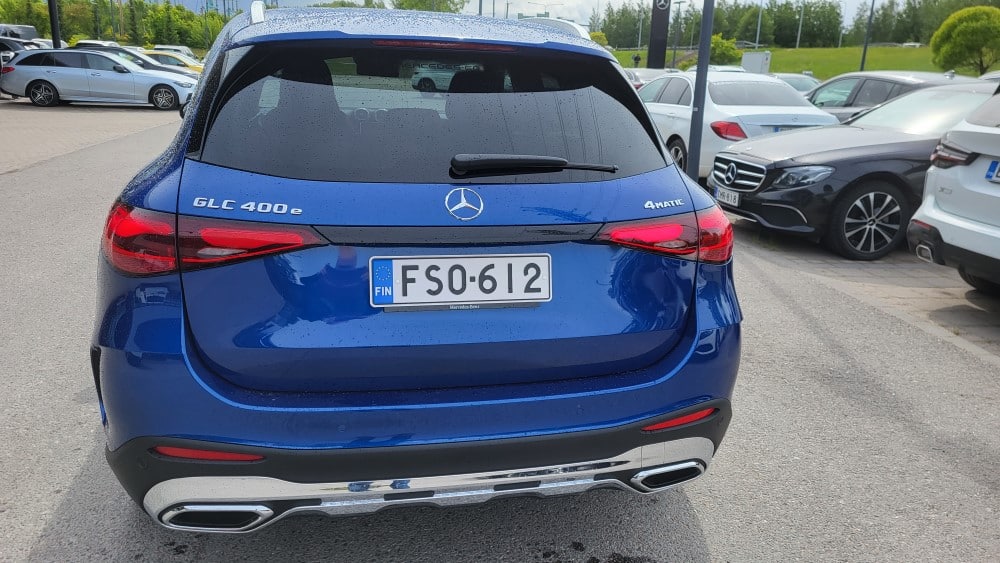
The car’s instrument cluster was all digital, with a more traditional instrument cluster feel.
In the centre is a chunky display screen, tilted to the front fender, where it neatly blends in with the overall look of the car’s interior.
A versatile driving experience
The GLC’s Driving Assistance Plus package, with all the creature comforts, offers a versatile driving experience. The driver can engage ‘autopilot’, which guides the car according to road markings between lane lines, and standard automatic cruise control keeps speed and distance to traffic ahead under control.
The driver conveniently becomes a passenger, the “car controller”. In reality, we are probably not very far from the everyday life where the driver is not needed at all, but the car moves naturally from point A to point B, with people just along for the ride.
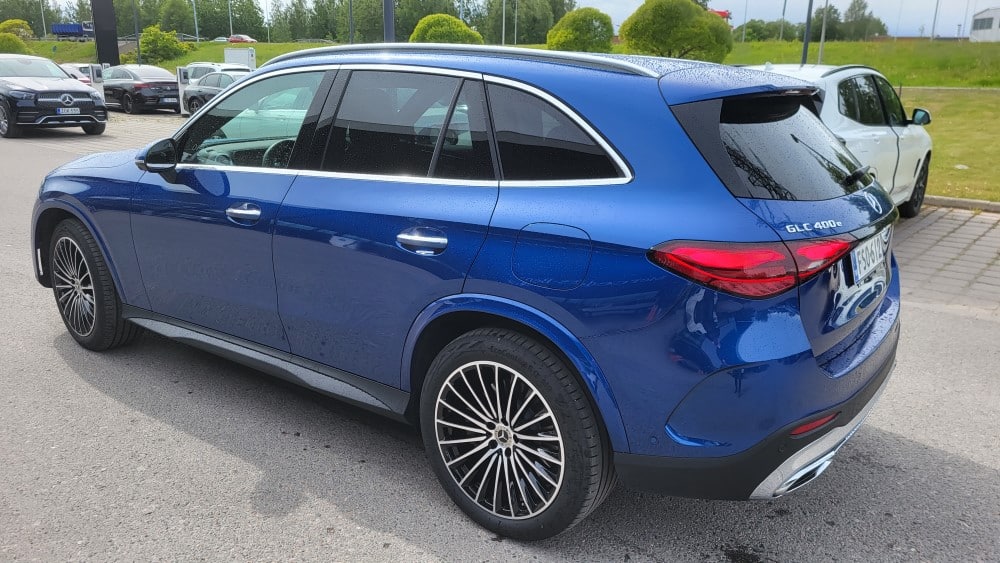
In our test drive, we tested the driving automation smoothly on a 30-kilometre stretch of motorway, with the car gliding along in traffic completely automatically.
If you indulge in a passive feel, simply following the traffic for a longer period of time can frustrate the driver when sitting in the seat.
Moving to more traditional highway driving, the “autopilot” can still be left unused when road lane markings are variable. Surely this too will get better as the technology becomes available.
Alongside the excellent driving experience, our attention was drawn to the noise of the car’s tyres and other background noise from the traffic. The noise is surprisingly loud for a car of this price and quality. Our test car was equipped with an excellent media system, which made the music in the car very audible, and perhaps that’s why it compensates for that external road noise and enhances the driving experience.
Media display slightly down
The GLC’s beautiful centre console digital overview screen turned out to be badly downgraded for the driver’s normal field of vision. It was too low and slanted to allow the driver to safely shift his or her gaze while driving to make the central adjustments.
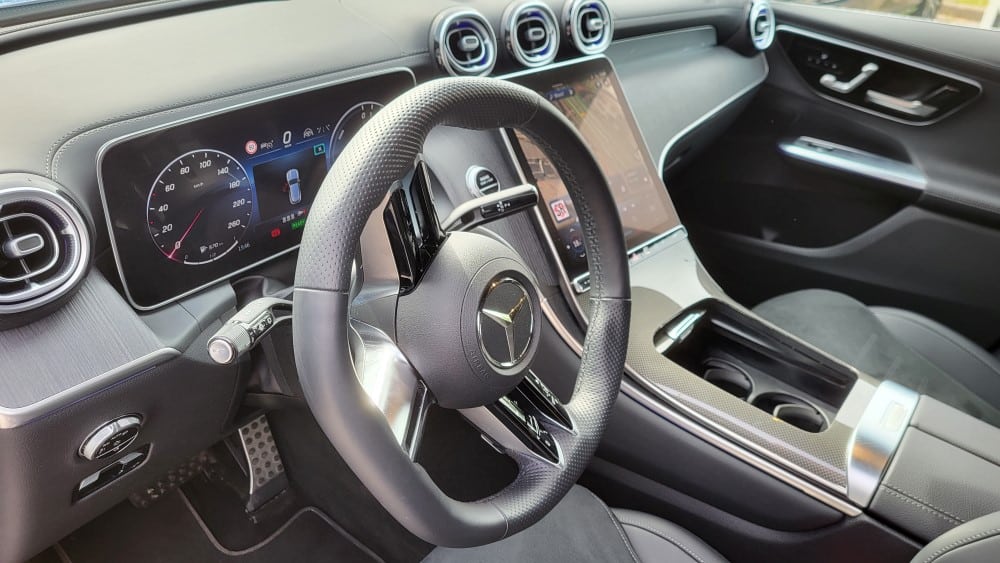
The screen resembled a large pad device at a difficult angle, where you have to hit the various settings appimently. The on-screen navigation view also proved challenging to follow due to the position of the screen.
This is apparently a case of the German engineer putting technical perfection above exceptional looks, certainly designed by a non-technical person. In addition, several control buttons were sprinkled around the steering wheel, more typical of Mercedes, on six steering wheel shafts and two levers.
In addition, a number of controls are located on the car doors, the most unusual of which was the layout of the seat controls. It takes some getting used to as its operation differs significantly from standard car controls.
As a whole, these controls and their touches on different sides left a very plasticy soft feel, where it was sometimes difficult to be sure if my finger was hitting the right spot, and if I was actually pushing the control with enough force.
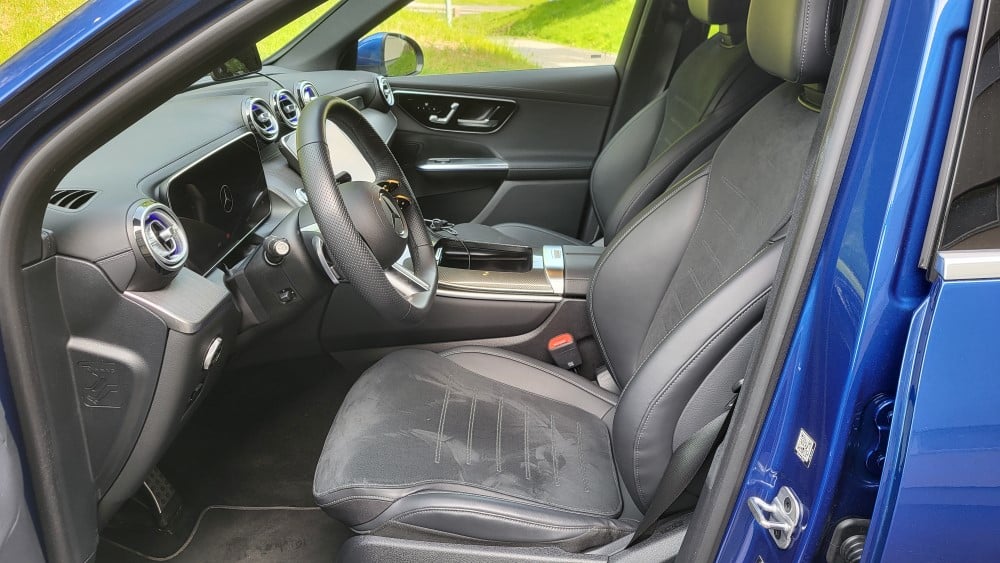
The Mercedes’ ratchet gearbox with its various levers around the steering wheel, housing numerous small switches, also takes some getting used to and for a driver with larger Finnish naked fingers.
In addition, the Mercedes’ ratchet gearbox in this model feels more like a ‘stick’ gearbox, where sensitivity in particular takes some getting used to.
The moustache has controls for the driving and media systems, and sometimes even wastefully, two levers, right and left, had the same buttons. This added to the feeling of crampedness around the steering wheel for the centralised functions.
For example, controlling the volume of the sound has to be done by flicking a finger along the lever arm. This presented a challenge when the car was in motion, as the controls are very sensitive. The volume easily slips too high, or too low depending on the accuracy of the finger.
The centre of the car was left free of everything, with only various types of compartments for storing items.
Of course, this is often necessary when storing a phone, chargers, perhaps other rechargeable smart devices, sunglasses and many other types of items needed on the road.
There were several USB-C connectors in the centre, so there was also power for various devices.
Personally, I still would have liked to have had at least one USB-A type connector so that I didn’t have to use a separate converter cable. Perhaps people might also have a need for a traditional 12V cigarette lighter socket, which was not available.
The car offers a wide range of driving options
Options range from off-road driving, to a sporty “sport” option. It is also possible to choose between purely environmentally friendly driving on electricity only, or an optimised hybrid driving option.
The chassis of the car was finely tuned to adjust to the different settings. The car’s ground clearance rises by a few centimetres when going off-road.
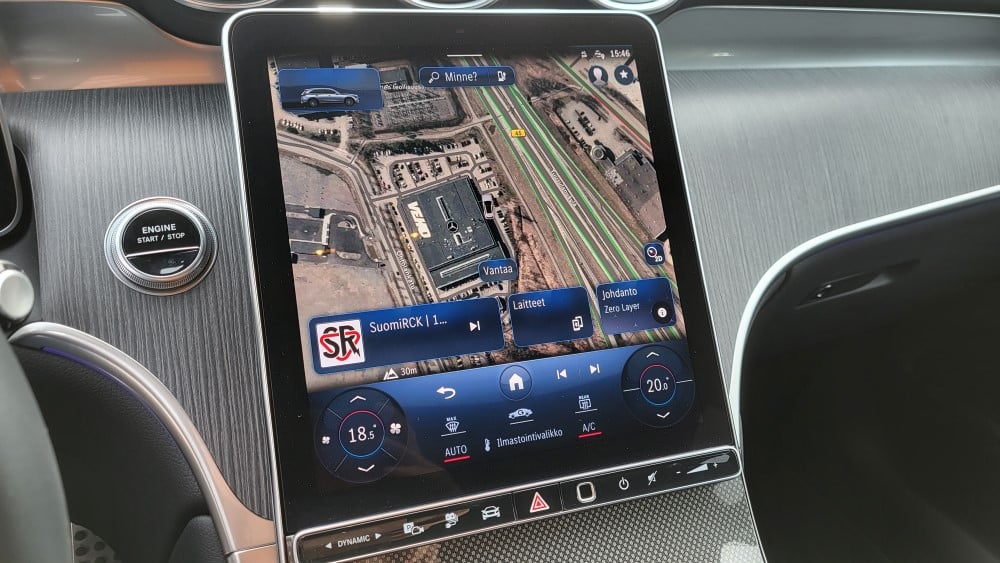
In mast driving, the chassis reacts much more smoothly to the road surface than with the stiff chassis settings in the sport setting and the stiffened suspension.
The truth is, however, that this car is made for tarmac, where it achieves by far the best ride feel. “With the ‘Sport’ setting, this car offers a great driving experience, as the car literally soaks up the road surface.
The test-driven GLC is a little reminiscent of a Swiss Linkkuve. A sports car, an electric car, a petrol car and a four-wheel drive City SUV, all in one package and separately.
For me, however, this was ultimately a sports car with a high ground clearance. Indeed, I choose the SPORT position, that’s what this car was made for after all!
The cabin of the car is also very sporty. The cup seats in front exude sportiness. The rather cramped cabin only adds to the sports car feel. Add to that the sporty engine sound effects provided by the growling GLC and it feels like the perfect sports car. In that case, don’t look in the back seat, lest the roomy boot spoil that vibe.
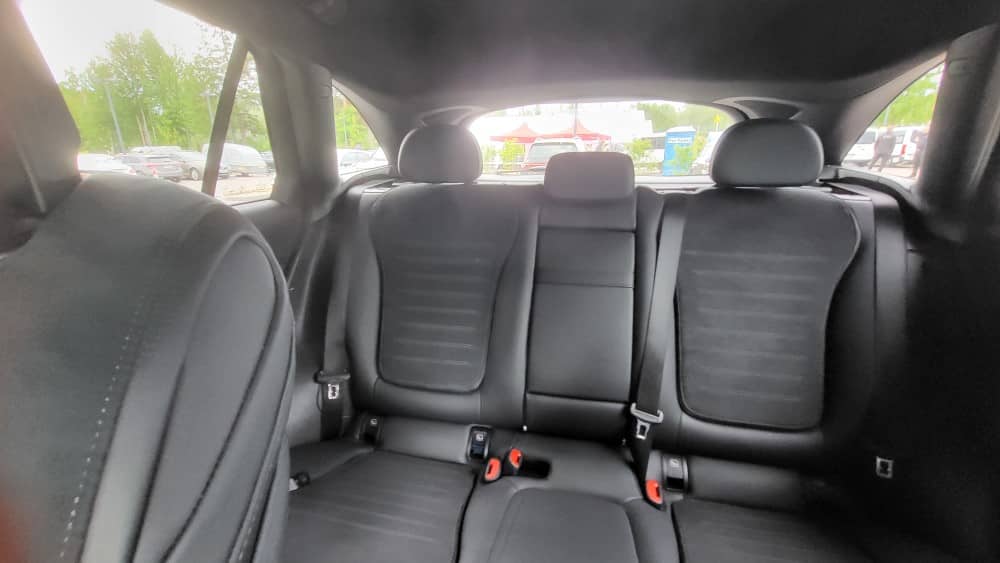
The range of over 100 kilometres of electric driving significantly increases ecological performance and improves the control of driving costs. At those distances, a car can be converted into a fully electric car, depending on the driving needs. If you drive only limited distances, mainly in the city, you could survive for a long time without using a petrol pump.
To achieve the GLC’s 0.29 power efficiency factor, the exterior of the car has been optimised in a number of ways. The size of the side mirrors has been reduced and they have been shaped to look a little more teardrop-shaped. Despite the size, there is adequate visibility from the rear.
The elegance of the car, both inside and out, is harmonious.
Different charging options
The GLC’s parking agility is enhanced by its 4% cornering rear tyres. This increases flexibility when parking the car, and when turning in tighter spaces.
The car has three charging options, a simple traditional plug-in charging with a charging time that already exceeds 10 hours. Standard features include an optional 11 kW AC AC charging system, typical of electric cars, an optional 60 kW DC fast charging support, which charges the battery in up to 20 minutes.
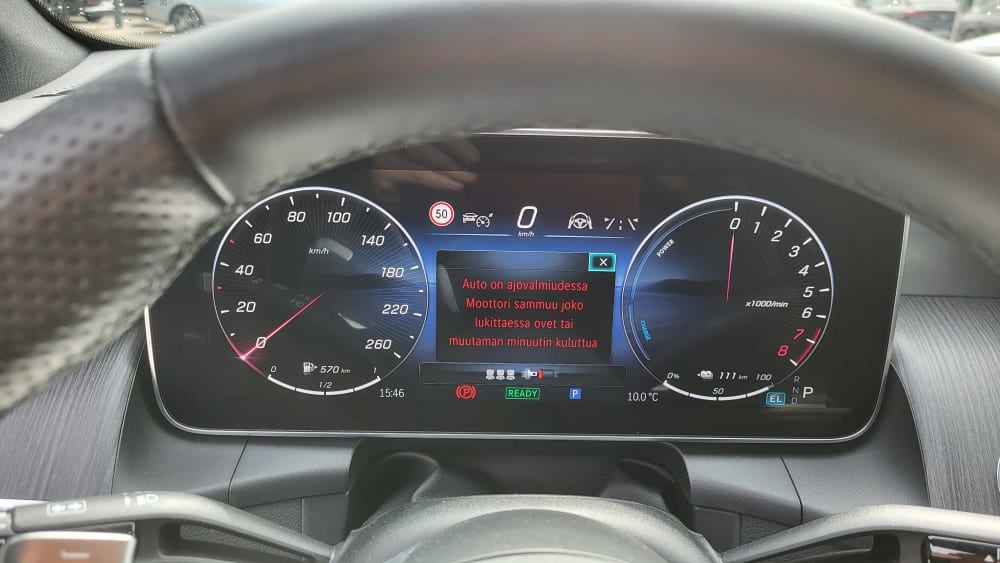
This is probably already a tolerable charging time, even when taking a coffee break on the side of the road. On the other hand, full electric cars need 2-3 times the battery capacity and the charging time is clearly longer compared to this car.
Our test car was equipped with the following additional accessories: AMG Line exterior, AMG Styling, electrically retractable tow hook, AMG alloy wheels, metallic paint, dashboard trim, centre console trim, Driver Assistance Package Plus, Keyless Go package, Guard 360 settings, Emergency Alert Package, MBUX with added reality navigation system, USB Package Plus, Traffic Sign Assist, Driving Dynamics Package and 60kW DC fast charging socket.
The total price for this option package was €20,554, and the full test-driven GLC will move home from the dealership at €98,383, including €2,693 in road tax.
Over 100 km on electricity
In the test drive, we achieved a “reasonable” fuel consumption of around 7.0 l/100 km for a 602 km test drive. In practice, the test drive used a fully charged battery twice alongside petrol, which improved the consumption figure for the internal combustion engine to some extent. The 31.2 kW battery gave us a total of 215 kilometres of ecological driving.
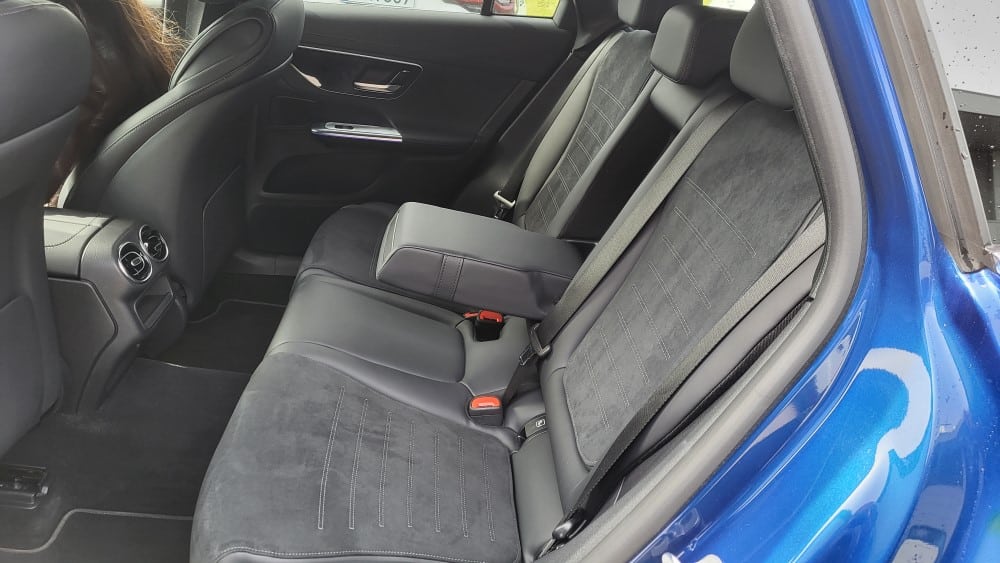
With the electricity prices now reduced, driving can be very cost-effective. In the test drive, we achieved a driving range of about 107-110 km on a single charge, which is quite close to the optimal 117-120 km figures given by the manufacturer.
Now, we fell well short of the 0.5 l/100 km petrol consumption claimed by the manufacturer, but it has to be said that our driving was heavily weighted towards combustion engine driving.
The test drive included several longer road trips, as well as some shorter urban trips without stopovers. We also tested driving on a traditional Finnish gravel road for about 10 kilometres, using the car’s “off-road” setting.
Although the interior space in the cabin is sporty and tight, there is more room for those sitting in the back seat to travel.
The curvy design of the rear doors can make it difficult for the tallest people to get in and out of the car. Ultimately, the journey is quite comfortable even from the rear.
The GLC’s boot has lost some of its height, as the hybrid’s batteries are mainly located below the boot. In addition, the empty space under the floor of the rear compartment and under the protective curtain remains quite cramped. On the other hand, the depth of the boot is reasonable, and if you remove the curtain, you can probably just about fit two hockey players’ gear side by side.
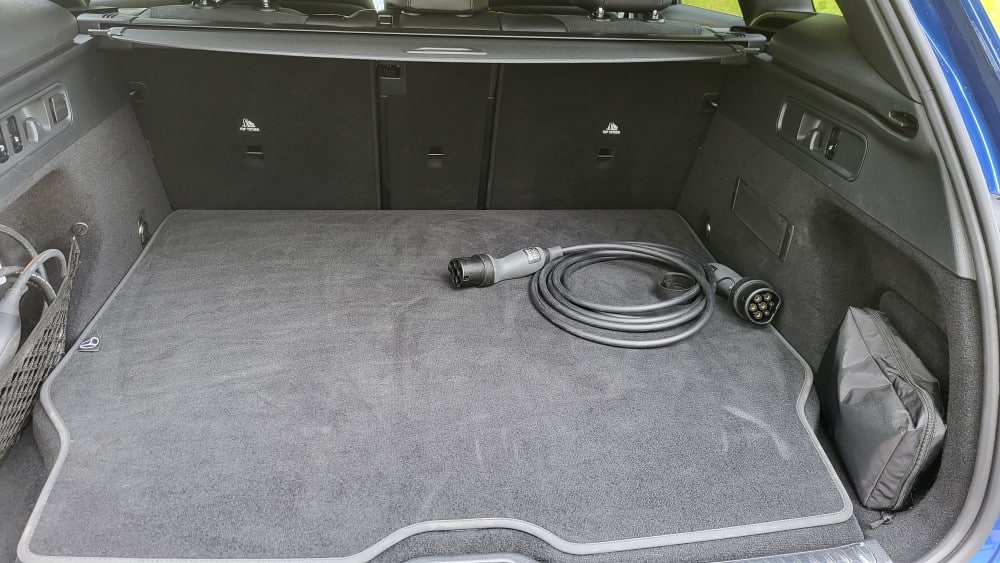
All in all, the car is a great driving experience, and for a hybrid, you get much more out of the electric drive. The car can even be used as an electric-only car, where appropriate. As a whole, this GLC features some unconventional design solutions that will certainly take more time to get used to than the test drive we conducted.
Perhaps some features will even make the driver like them, but the car will certainly be an appealing option for many as a new vehicle.
A car is a good value for money when you choose the right accessories to suit different buyers’ preferences. Personally, I would have liked to see the addition of a ‘head-up display’, which I think would have improved the driveability even more.
The in-car navigation display is unfortunately below the driver’s field of vision in the centre of the car, so it doesn’t really get the full benefit of the display while driving.
Mercedes GLC 400 e 4MATIC A
- Electric motor power: 100 kW (136 hp).
- Combustion engine power: 185 (252 hp)
- Maximum engine torque: 650 Nm.
- Transmission: 9-speed automatic
- Acceleration: 5.6 seconds (0-100 km/h) and top speed 237 km/h
- Manufacturer’s declared combined fuel consumption: 0.5l/100km (CO2 emissions 12g).
- Fuel tank capacity: 49 litres
- Electric range: 121 km
- Maximum charging power / (AC) : 11 kW plus DC fast charging.
- Own weight: 2355 kg.
- Luggage compartment: 620 l.
- Traction: four-wheel drive
- Ground clearance: Mercedes does not quote this figure, but according to the variability of the chassis settings, there is a margin of a couple of centimetres underneath.
- Length: 4716 mm, Width: 1890 mm (2076 mm with toys) and height 1648 mm
- Drawbar pull: 750 kg without brakes (2000 kg with brakes)
- Price from: €77 829
- Price of the test car: €98 383
Test drive and text by Juha Remes
